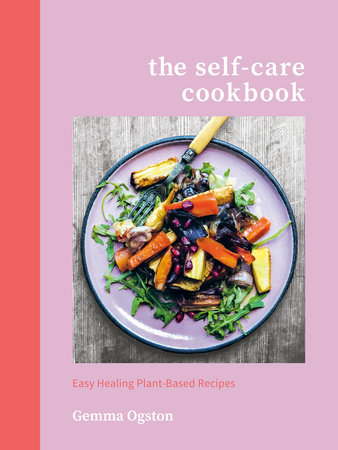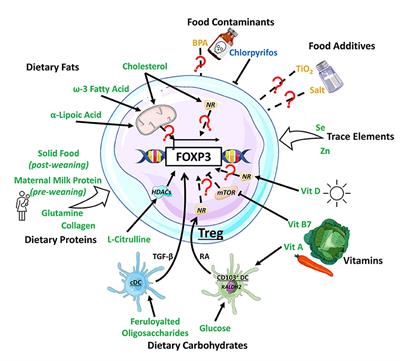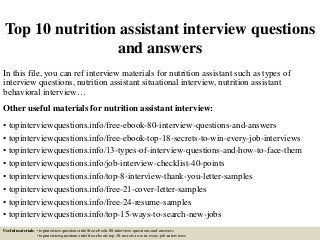
Incorporating more fruits or vegetables in your recipes can help make your child's food healthier. You can either shred the vegetables or blend them in your blender. Whole grains can be substituted for white flour when baking. Flax seeds, wheat germ and flax seed can be used to cook. Lastly, if your children do not like the taste of whole grains, you can always substitute them with other grains. Try using fresh fruits or berries.
It is well-known that healthy meals for children have many health benefits. Children may find it appealing because it promotes good health. You should also choose healthy foods low in sugar. Also, avoid processed foods and make sure you are providing healthy meals for your family. You can combine different foods. A great snack option is to use sliced fruits or vegetables. You can also buy chocolate brownie protein bites or cookie dough. They're healthier than a bag o chips and contain all-natural ingredients.

To make kids' meals healthier, choose lean meats. Turkey burgers are lean and can be topped with fresh vegetables. If you can't afford beef, you can make your own veggie burgers out of beans or chickpeas. Using hummus, red onions, and portobello mushrooms are good options for this. By adding these ingredients to the burgers, you can easily add flavor to them.
It is important to choose foods that are good for your kids' health. You can also use fruits and vegetables to add variety to their diets. These meals can be prepared with your children. They can even be involved in the preparation and setting up of the table. Desserts should not be used as a bribe. You can always provide healthy dessert options for your kids. If you don't like the taste of their desserts, you can always serve them with something else that they prefer.
Creating healthy kids meals is a good way to make the entire family happy. You'll be able to make sure that your kids enjoy their meals. This will allow you to make delicious meals for the family by incorporating these ideas. You can create a great dinner that is both delicious and healthy with a little creativity. Your kids will have fun eating your dinner and it will be a treat for them.

Although you may have some favorites, avoid fast food chains. They can be unhealthy, but you can still make your children healthier. If you're worried about what your kids eat, you can try a variety of recipes and find ones that are tasty and nutritious. By incorporating healthy ingredients into your kid's meals, you'll make them feel good about eating.
FAQ
What kind of food should I avoid when trying to lose weight?
Avoid trans fats. Trans fats can raise LDL (the unhealthy) cholesterol levels while lowering HDL levels (the good).
Trans fats are commonly found in fast food, deep-fried and packaged baked goods as well snack cakes and other processed foods.
These unhealthy fats cause inflammation which leads to heart disease, diabetes, and other health problems.
Avoid eating foods that contain artificial sweeteners. Artificial sweeteners may increase your chance of getting cancer.
They are found in everything, from soft drinks to chewing tobacco to candy bars. They can also be found in other foods like meat, poultry, and eggs.
Artificial sweeteners include saccharin and sorbitol.
The American Heart Association recommends that these chemicals be avoided as they can damage DNA.
Which workout is best to build muscle?
Two main types of exercises are required for building muscle mass. These are compound movements and isolation exercises. Isolation exercises target specific muscles while compound moves focus on multiple groups at once.
The best way to improve your workouts is to choose exercises that challenge all your major muscle groups. This ensures that you are always working hard during each session.
MyFitnessPal, an app that tracks your actions, can be used to help you keep track. It allows you log everything, including calories burned and weight lifted. You can also create customized meal plans based upon your goals.
What is the best 7-day workout program?
A seven day exercise program should include cardiovascular training (running or biking), strength exercises (using freeweights, weight machines) and one flexibility/core workout. It is important to complete each activity at least once weekly. Each session should not last more than 45 minutes.
Cardiovascular Exercises: Running, biking, swimming
Your goal is to exercise at least 60 minutes each week. To achieve the best results, aim to exercise for at least 75 minutes each week. Cardio exercises can be used to increase blood flow, stimulate muscle growth, and improve blood circulation.
Strength Training
While cardio exercises target the heart and lungs, strength training targets the muscles and bones. Strength training helps you burn calories even while resting.
Flexibility & Core Workouts
To strengthen your whole body, flexibility and core work outs are excellent ways to do so. Yoga and Pilates are both excellent choices.
How To Get Rid Of Belly Fat Fast?
There are several ways to reduce belly fat fast. One method is to eat less and drink lots of water.
Running and swimming are two other ways to boost your metabolism.
If you want to remove belly fat quickly, you should also avoid sitting down for too long. Stand up more often throughout the day. This will help you lose more calories.
There is an alternative option if you've tried all of these options and still have trouble losing belly fat.
You will need a belt to do this. The belt fits around your waist and is tightened when you sit down.
As a result, you will feel uncomfortable and move around. This encourages you to burn calories and decrease your belly fat.
Cardio Exercise: Good or Bad for Your Health?
Cardiovascular exercise can have many benefits. It improves blood circulation, strengthens heart muscle, gives you energy, and can even help you lose weight.
Cardiovascular exercise includes running, biking, hiking, swimming, tennis, basketball, soccer, volleyball, football, etc.
It is important to keep in mind that cardio exercises should not only be performed at a high level of intensity, but also at low levels. Doing this could lead to injury.
If you feel fine, only do the cardiovascular exercise.
You should never push yourself beyond your limits. If you do, you might injure your self.
Begin by warming up before engaging in cardio exercise. Then, gradually build up to higher intensity levels.
Always listen to your body. You should stop immediately if you feel any pain while doing cardiovascular exercise.
After a cardiovascular training session, it is recommended that you take some time to relax. This will give your muscles time for recovery.
Cardiovascular exercise is essential for losing weight.
It is the most effective way to burn calories and reduce belly fat.
Statistics
- Candidates and applicants must pass all four tests at 70% (minimum level) to graduate from Basic Deputy U.S. Marshal (BDUSM) Training. (usmarshals.gov)
- According to the American Heart Association, blood pressure should be checked at least once every two years, beginning at age 20. (my.clevelandclinic.org)
- 10 pounds in a month is likely during a lean bulking phase, especially for beginners. (muscleandstrength.com)
- An estimated calorie range for moderately active adult males falls between 2,200 to 2,800 calories per day, depending on age. (eatright.org)
- By John Thompson Take a whopping 38% off a set of PowerBlock Pros. (menshealth.com)
External Links
How To
How do I lose weight while working out?
Exercise helps you lose calories by increasing your metabolism and oxygen intake.
Exercise at a moderate intensity to safely lose weight.
To burn fat while exercising, follow these tips:
-
Cardio exercises include swimming, running or cycling.
-
Do 30 minutes of exercise three times a week.
-
You can lose weight by adding strength training to the routine.
-
Avoid intense training. It's possible to build muscle, but not lose it.
-
Hydrate well during exercise. Water helps to flush out toxins from the body and maintains proper hydration.
-
After working out, make sure to drink low-fat proteins shakes. Protein shakes are great for your muscles and energy.
-
Smaller meals are better for you.
-
Don't skip breakfast! Skipping breakfast can cause you to feel tired and sluggish.
-
Take care of your mental health. Stressful situations can affect your metabolism.
-
Keep a positive attitude. Studies show that overweight people are more likely to be obese than those who perceive themselves as attractive.
-
Get enough rest. Insufficient sleep can make it more difficult to lose weight.
-
Stay active. Be sure to get up and move around every hour or two.
-
Maintain a healthy diet. Healthy eating will keep you fuller and more satisfied for longer.
-
Find ways to relax. Your body won't release stress hormones that cause muscle tissue destruction if you have a tense mind.
A balanced diet provides all the nutrients necessary for growth and development.
You should eat six small meals per day rather than three large ones. This allows your body time to digest what you've eaten.
For strong bones to be maintained, you need approximately 500mg of calcium per day. Calcium is available in dairy products like milk, yogurt, fortified soy beverages, orange juice, cereal, bread, and cereals.
Calcium can be found in leafy green veggies, beans, tofu and nuts as well as seeds, nuts and cheese.
Vitamin D is essential for calcium absorption. Vitamin D is found in eggs yolk, fatty fish and fortified foods.
Vitamin E is essential for skin health. Vitamin E is found in vegetable oils and wheat germ oil, as well as peanuts, almonds and sunflower seeds.
Your body needs zinc to maintain normal immune function and heal wounds. Zinc is found in seafood, oysters legumes meats, whole grains, whole grains and meats.
Zinc deficiency can cause fatigue and loss of appetite. It can also lead to depression and impaired immunity.
Eating too much sugar causes insulin resistance, which increases blood glucose levels. Insulin resistance is linked to weight gain.
Insulin resistance develops when there are high levels of free radicals in the bloodstream. Free radicals are molecules containing unpaired electrons which cause damage to cells membranes.
The most common sources of free radicals include food additives.
Free radical damage can cause cancer, heart disease and diabetes, as well as arthritis, asthma, and other diseases.
A well-balanced diet rich in antioxidants is the best way for you to avoid free radical damage. Antioxidants protect against oxidative damage.
Vitamin C, beta carotene (found within citrus fruits, carrots, sweet potatoes and spinach), Vitamin E (found inside nuts, olive oils, avocados and eggs), and Vitamin C (found among mangoes.
Selenium, copper as well as manganese and zinc are some other antioxidant nutrients.
Selenium protects cells from free radical damage. Selenium can be found in Brazil nuts and liver, kidneys, liver, kidneys, shrimp, cod, turkey and lamb as well as chicken.
Copper protects your eyes, brain, eyes and red blood cell. Copper is found in shellfish, poultry, meat, and organ meats.
Manganese forms an essential part of bone structure. Manganese may be found in brown rice or spinach, bananas and prunes as well raisins, oatmeal and lentils.
Zinc is required for normal growth, reproduction and wound healing. Zn is present in lean cuts of meat and white fish, as well as eggs.